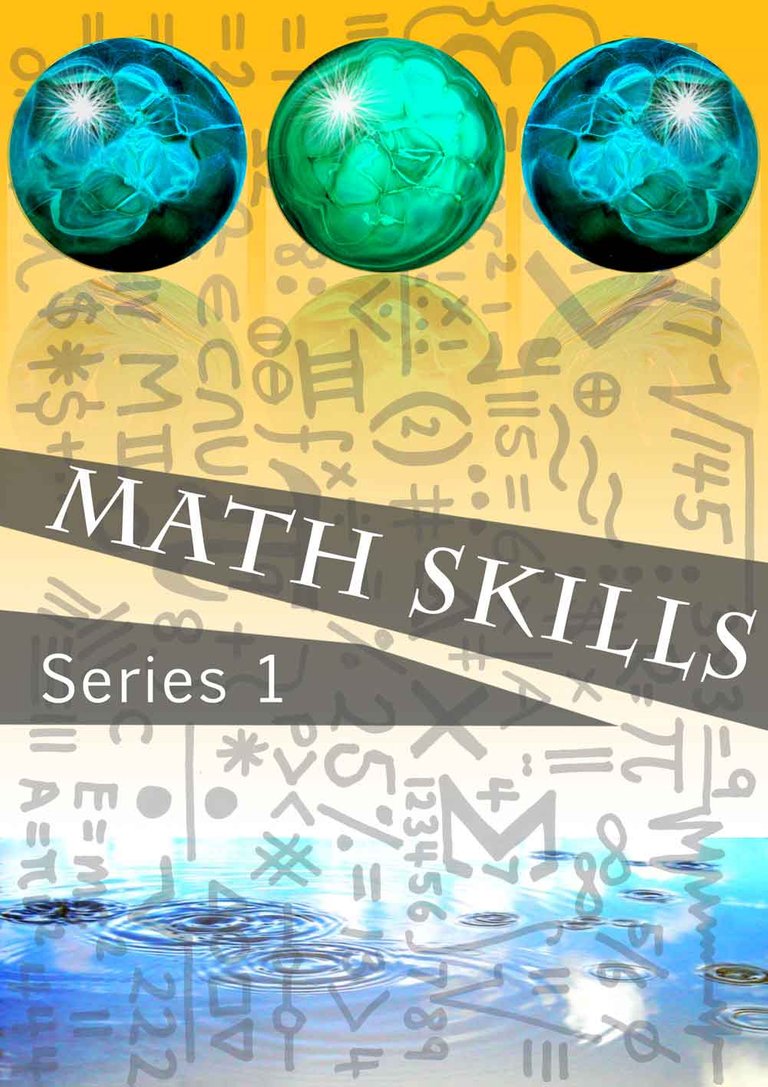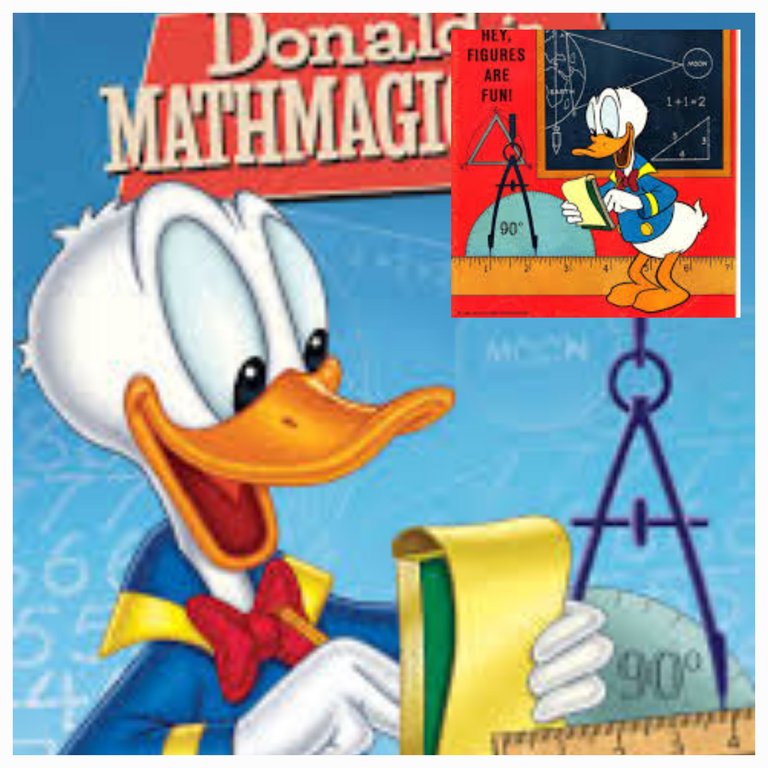In 1957 Donald Duck in 'Mathmagic Land' was rated a top program for kids to watch. The motto was... be entertained while learning the concepts of Mathematics. After stumbling upon this YouTube clip from Walt Disney Productions again, I thought I would share my Professional Learning Report with you which includes:
- Identify, describe and apply effective teaching strategies for teaching mathematics.
- Analyse and critique strategies and resources for teaching mathematics in primary classrooms or home education settings.
Donald in Mathmagic Land shows that mathematics should stimulate a desire to want to learn by delivering the content creatively and with variety so not just one outcome is achieved but several to avoid tediousness. Combining key learning areas across the curriculum such as reading (English), accessing online video (Technology), numbers and symbols (Maths), and Pythagoras (Social Studies) allows students to explore the content and processes in mathematics curriculum.
It should also create a sense of achievement and equity in every student. Students need to collaborate in small groups and help each other with problems and come to an agreed solution. This also covers the foundational mathematical concept of learning as a social activity in that “both the mathematics and the manner in which it is learned are influenced by the way children interact with each other and with their teachers” (Booker et al. 2004, p. 6).
Lay that Foundation
If mathematics were a food (Frid, 2001) teaches that mathematics is like a foundation, everything depends on it. The foundation needs to be laid properly so the rest can be build upon it. If the foundation is not done properly, it will cause enormous problems and generally one must start from the beginning again.
If mathematics concepts are not understood in primary school years, students could be left floundering in high school and possibly fail due to either poor teaching or their own non-mastery of mathematical concepts. Scaffolding and effective teaching methods will need to be implemented at a young age in order for students to master mathematics in consecutive years.
Just watching this video again proves to me how much mathematics teaching and learning has changed from individual and rote learning, to cooperative group learning (Booker et al. p. 25) and social interactivity such as dialogue, discussion, argumentation and negotiation (Booker et al. p. 11). The traditional passive learning has also been replaced with active learning, known as constructivism (Booker et al. p. 10).
How does having these skills relate to you as an effective primary mathematics teacher or homeschool parent teacher?

I have found in the past that some students consider mathematics as irrelevant and a waste of time, therefore in order for anyone to be an effective teacher, it is the teacher’s (or parent's) duty and pleasure to come up with new ideas and innovative ways of presenting mathematics to students. It is the teacher’s responsibility to show students that mathematics is “all joined together, accessible to all, and everywhere you look” (Frid, 2001, p. 16).
The Board of Studies NSW (2002, p. 6), states that mathematics teaching requires a practical application, provide opportunities for creativity, challenge and leisure. Effective teachers need to support concurrent learning across other key learning areas and build a foundation for future mathematics education.
To read more about the concept of teaching Mathematics read my other post: How to build a solid foundation for mathematics education through active learning, cooperation, and participation. https://peakd.com/hive-148441/@ingridontheroad/mathematics-strategies
Having lived in NSW, it brings to my attention that the Board of Studies NSW (2002) provides a K-6 Maths Syllabus which is a local curriculum document connected to teaching mathematics and one of six key learning areas for the primary curriculum. Because the Education Act 1990 (NSW) provides minimum curriculum requirements for primary schools, the teaching of mathematics must be provided in each of the key learning areas for primary education for each child during each year.
The Mathematics K–6 Syllabus clearly shows that it is divided into six strands. The process strand is 'Working Mathematically' while the five content strands consist of Number, Patterns and Algebra, Data, Measurement, and Space and Geometry.
Working Mathematically within these guidelines embraces the five key processes that are firmly established into the other five strands through the content. The five content strands also have a set of substrands. The relationship of all of these strands and substrands are essential to teaching and learning mathematics.
Be Effective and Inventive
In today’s rapidly changing world, teachers need to teach the skills of mathematics with confidence (Reys et al. 2009, p 7). Effective teachers are inventive and should be able to explain how to find the area of a rectangle by providing not only the formula Area of a Rectangle = B x H, but also by providing a tangible, visual resource such as a computer or model blocks.
Students should be able to touch, manipulate or take apart in order for them to understand the concept of geometry. First, it must be explained to them that in order to find out the area one needs to measure the length (or base) and height. Second, times those two measurements and you will have the answer. The concept of geometry can be explored using technology by utilizing online interactive web sites.
In order to be an effective teacher (or parent/teacher) in NSW for example, the K-6 Maths Syllabus (NSW) should be utilized. Mainly because students should be given the opportunity to develop knowledge, skills and understanding through inquiry, application of problem-solving strategies including the selection and use of appropriate technology, communication, reasoning and reflection (Board of Studies NSW 2002).
That particular document will be a guide as to what to teach and what strands and substrands students need to learn in order to master the desired mathematical outcomes. Reys et al. (2009) claims that mathematics is anything that requires a mathematical calculation or process, which includes the study of quantity, structure, space, change and includes arithmetic, algebra, geometry, trigonometry, and calculus.
Key Points
- Teachers need to be inventive.
- Deliver curriculum creatively.
- Create achievement and equity.
- Lay solid foundations.
- Combine key learning areas across the curriculum.
- Be innovative in your presentations.
- Teach with confidence.
- Allow for student inquiry, and application of problem-solving.
In Conclusion
Mathematics is the study of patterns and relationships, a way of thinking, an art, characterized by order and internal consistency, a language that uses carefully defined terms and symbols, and an important tool for students and teachers alike (Reys et al. 2009).
How to build a solid foundation for mathematics education through active learning, cooperation, and participation. https://peakd.com/hive-148441/@ingridontheroad/mathematics-strategies
References:
Online Maths Teaching Treasures Publications. (2009). Retrieved September 1, 2022 from:
http://www.teachingtreasures.com.au/maths/Maths_more.html – web site
Board of Studies NSW. (2002). Mathematics K-6. Parent Support Document.
Introducing the Mathematics K–6 Syllabus to Parents and School Community Members. Published by Board of Studies, Sydney NSW 2001. Retrieved November 12, 2009 from: http://www.boardofstudies.nsw.edu.au – online document
Booker, G., Bond, D., Sparrow, L., and Swan, P. (2004). Teaching Primary Mathematics. Pearson Australia. Frenchs Forrest NSW Australia - Book
Education Act New South Wales Consolidated Acts. (1990).
Retrieved December 4, 2009 from: http://www.austlii.edu.au/au/legis/nsw/consol_act/ea1990104
Frid, S. (2001). Food for thought: Initiating discussion about mathematics learning. Australian Mathematics Teacher, 57(1), 7:16 – pdf
National Council of Teachers of Mathematics. (2009). Retrieved December 8, 2009 from: http://illuminations.nctm.org/ActivityDetail.aspx?ID=21 – web site.
Donald in Mathmagic Land. YouTube video retrieved September 2, 2022 from:

Photos and written work is my own unless otherwise specified.
©️ingridontheroad
Congratulations @ingridontheroad! You have completed the following achievement on the Hive blockchain and have been rewarded with new badge(s):
Your next target is to reach 200 replies.
You can view your badges on your board and compare yourself to others in the Ranking
If you no longer want to receive notifications, reply to this comment with the word
STOPCheck out the last post from @hivebuzz:
Support the HiveBuzz project. Vote for our proposal!